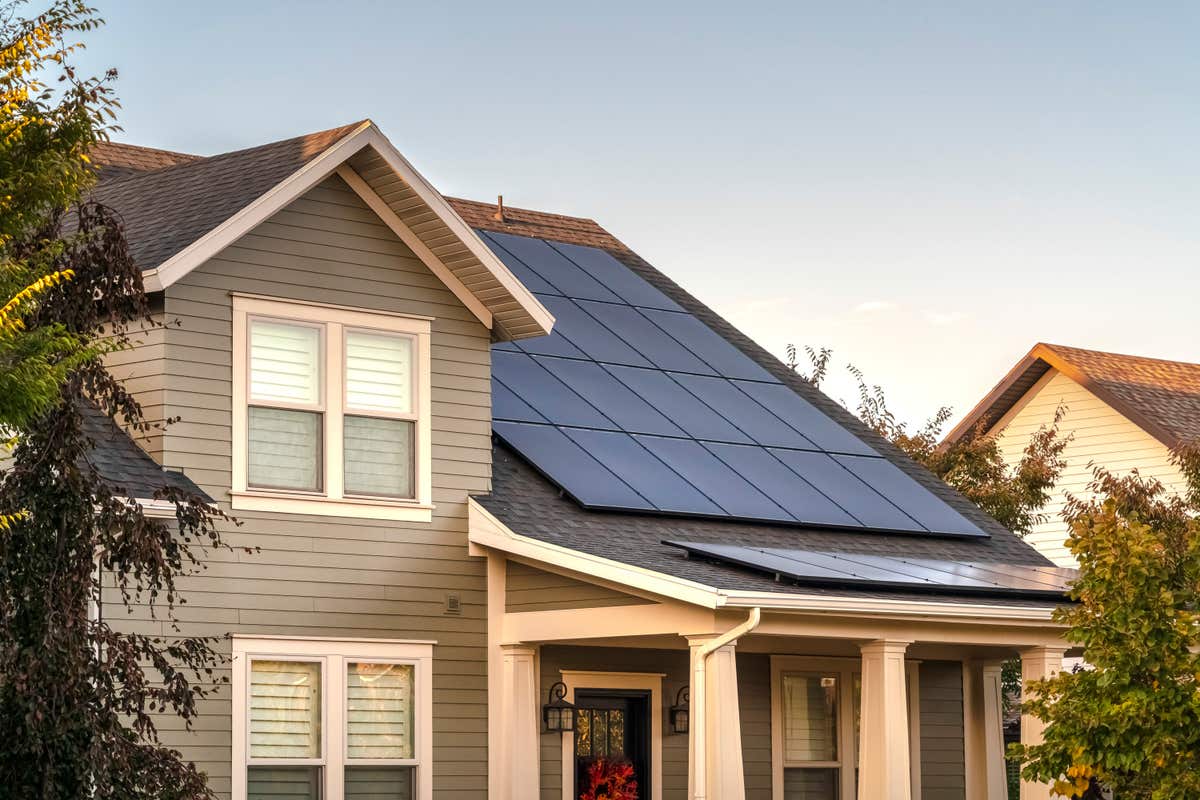A lot of factors go into buying a house for the first time, but perhaps the most pressing concern usually boils down to money. How can you afford a new home? How do you keep bills and home insurance premiums low?
How to save money on your first home
We talked to a few people who’ve been on both sides of the homeownership equation: a realtor, a mortgage servicing specialist, and a landlord. These experts in their fields are also homeowners who’ve owned more than one property. We asked them to share their best money-saving tips for first-time homeowners, including how to make money off a new real estate investment, how to make the home energy efficient, and how to avoid homeowners insurance claims. Here’s the advice from folks who’ve seen it all and who’ve been in the real estate business for more than 35 years.
1. Consider buying a multifamily home to help pay for your first mortgage
When you’re just starting out as a homeowner, look at all of your options. If you’re open to living in an apartment, you may want to consider purchasing an income-producing property like a multifamily property. If you plan well, you’ll likely be able to cover your monthly mortgage payments with rental income.
The initial purchase may be slightly larger than a single-family residence, but if and when you’re ready to move up to a different home, you’ll receive a bump in income when you’re able to rent out your old unit. When you do make this move, you’ll have to make adjustments to your homeowners insurance (and landlord policy), but your insurance company can talk you through those steps.
Advice for multifamily homeowners: To keep your budget balanced, save 40 percent of your rental revenue for regular expenses. This may include the cost of utilities, taxes, and insurance.
2. Preserve “livable space” during major improvements to avoid rent
If you’re looking for a deal to ease you into homeownership, your first house may need some renovations. Consider moving in before the work is complete to skip paying for a short-term rental while you’re updating your new house. If you go this route, you’re sure to save money, but it’s important that you’re able to live comfortably in your new space for the duration of your projects.
We spoke to one homeowner who moved into their first home while they were in the middle of converting it from a single-family residence into a three-unit multifamily.
They learned fast it was crucial to have a safe haven within the renovation chaos where they could do everything they needed to do on a daily basis. They made sure that they could live, eat, and sleep in a space that was separate from the construction area.
Sage words for moving mid-renovation: Set aside livable space, and the transition will feel a lot more manageable – and a lot less expensive.
3. Check contractor references to avoid getting burned
Those renovations? Chances are you’re not going to do them all yourself. It can be hard to know how to hire the right contractor when you’re starting out in your first house, but the homeowners we talked to recommend talking with your friends and neighbors to find out who is doing the kind of work you need locally.
Today, Angi and other online resources offer reviews and money-saving tips for first-time homeowners who need to hire a helping hand. These outlets didn’t exist when many veteran homeowners started out in the 80’s, but even today many folks rely on recommendations from peers. Of course, as one realtor told us, it’s still a good idea to check references.
The realtor hired an expert to upgrade the energy efficiency of their antique windows. Everyone they spoke with said this contractor did excellent work, so the homeowner didn’t check his references.
The contractor turned out to be flighty and challenging to work with, and he dragged the project timeline to its breaking point. As the project went on, the homeowners discovered that the other contractors they’d hired knew the window guy was tough. The folks who recommended him knew, too, but no one offered up that information and the homeowners had failed to ask.
Words of wisdom: Don’t skip calling references and asking frank questions when it’s time to hire a contractor. Having the right person on the job will save you time (and time is money when you’re being billed hourly).
Renovations are an investment on their own, so save money by hiring a contractor who will adhere to the project timeline.
4. Keep energy bills low with good insulation
One of the major surprises for new homeowners is often energy costs. If you’re a first-time homeowner moving up from a condominium or a rented apartment, you’ll be heating or cooling a lot more square footage. And that may put strain on your monthly budget.
The homeowners we spoke with all agreed that whether you live in an extreme climate on either end of the thermostat, it doesn’t matter what your heating or cooling source is if your home is well-insulated.
If the first home you buy needs insulation improvements, make an investment early into your homeownership to improve your home’s energy efficiency (and save money!) for decades.
Save on energy costs: Make sure your house is well-insulated.
5. Conserve water to save dollars
One of the best tips for first-time homeowners who are looking to save money? Conserve water.
Water conservation at home goes beyond turning off the tap while you’re brushing your teeth. Among the worst water wasters are a running toilet and a leaky faucet.
Consider that on average water bills cost homeowners $150 per quarter (around $600 annually). If you have a running toilet, that bill could triple to over $450. That’s no joke.
Airtight advice for homeowners: It’s important to have good faucets that don’t leak and toilets that don’t run to save on water costs. Keep your plumbing in ship shape.
6. Make repairs before problems get more expensive
It’s hard to think of a problem that will solve itself when it comes to home repairs. Roots displacing the front walk will only displace more, and a leaking roof won’t patch itself. Home repair needs only get more extreme with time.
To follow the advice on water conservation: If you have an unreliable old toilet that requires a plumber’s attention every other month, in addition to the cost of wasted water, you’ll be tallying up the cost of repairs that average of $220. You can pay for three or four repairs over the course of a year, or purchase and install a new toilet for around $400.
To neglect a running toilet is basically the equivalent of going into the kitchen, turning on your faucet, and leaving it running for days. It’s just not smart. A new, low flow toilet will contribute to your water conservation efforts and the savings that come with those.
Repair reminder: Consider what the cost of leaving whatever’s broken as is for a month. Extend that over a full year; how much will it cost you to wait?
Conserve utilities when you can – those bills can add up fast.
7. Maintain your heating source to delay a costly replacement
Your heating or cooling appliances are critical pieces of your home’s machinery. And they don’t come cheap.
Whether you have a swamp cooler or a propane furnace, keep these major home appliances on a regular maintenance schedule.
For some appliances, this may be as simple as changing a filter, but many home appliances need to be serviced on a regular basis to stay within their warranty.
Hot tip: Keep up with your regular service schedule for major household appliances. There’s no affordable way to replace these items if they fall into disrepair, but you can make them last longer by keeping them in good shape.
8. Reduce your home’s liabilities
Don’t defer home maintenance. This message may be difficult to take if you’re trying to save up for something big, but it’s best not to leave a broken banister in place for a day longer than is necessary.
This advice should be applied indoors and out: Keep steps and walkways up to code to reduce the likelihood that someone might trip or fall on your property. If these areas are out of line with local regulations, you may find yourself faced with mandatory upgrades or loss of homeowners insurance coverage.
For example, a mortgage loan servicing specialist who has an inside view of the insurance industry shared how her homeowners insurance company once did a surprise outside inspection of her home. The insurance agent spotted a small staircase that led from the living room’s French doors to a patio behind the garage. Unfortunately, these steps weren’t up to code: there was no railing.
Because this presented a potential personal liability issue, the insurer contacted her to say they’d cancel her homeowners insurance if she didn’t bring the staircase up to code. She was happy to correct the problem, but she said it opened her eyes to the importance of keeping her home up in line with insurance requirements.
Proactive pointer: Keep your home up to code and make sure your homeowners insurance covers the features you have on your property.
Save money by staying on top of home maintenance
When you’re a first-time homeowner, it may seem like it takes superhuman organization skills to stay on top of all the things that need maintenance in any given month of the year. But experienced homeowners know that this gets easier with time.
If you create and track a home maintenance schedule from day one, you may find it easier to get through your annual chores. But if making a system from scratch sounds daunting, you may find Kin’s home maintenance guide useful.
There will always be projects on deck and replacements to save up for, but the less maintenance you defer, the fewer surprises you’ll have along the way to becoming a veteran homeowner yourself.


